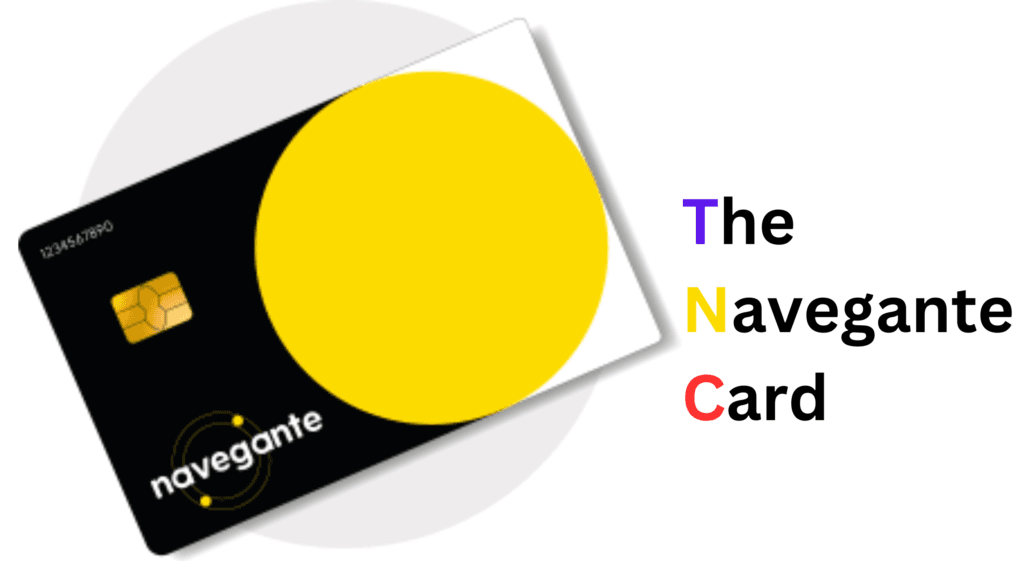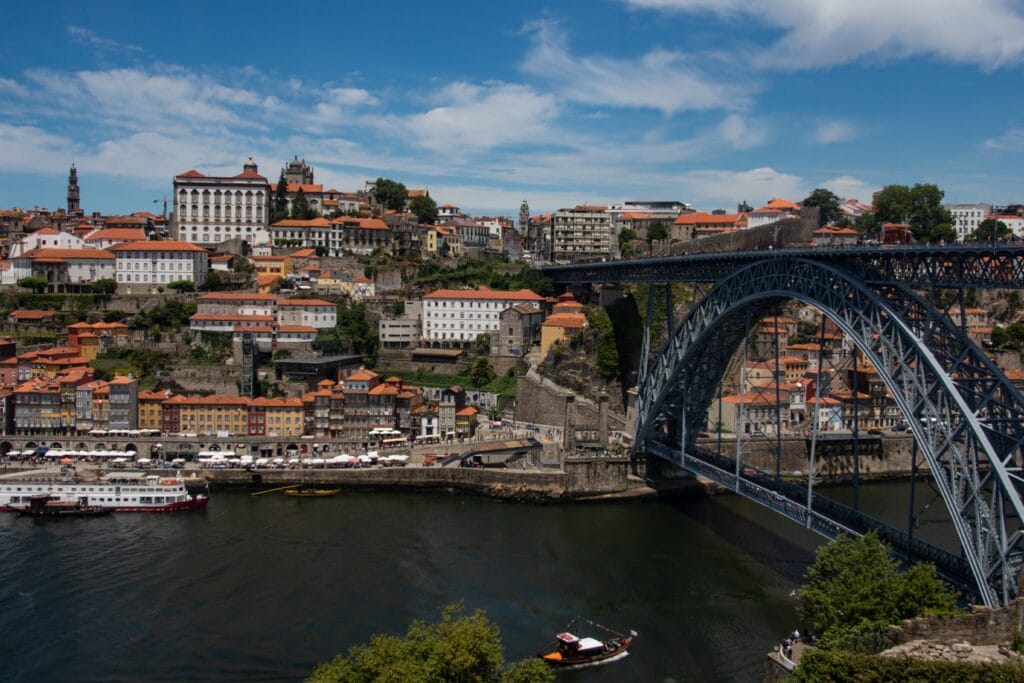Last Updated: March 28, 2025
Thinking of Lisbon as your next digital nomad destination? Then this article is for you. Here we discuss everything about Lisbon you need to know before setting up your DN station in this captivating city. We’re covering the basics, like how much it costs to live there, what visas you might need, and the best neighborhoods.
We’ll also talk about cool stuff, like where to catch a bite, must-see spots, and how safe it is, and much more! Let’s find out why Lisbon could be the perfect place for you to work remotely and have some fun.
Living in Lisbon as a digital nomad can feel like having your office in a city that’s as cool as it gets! So without any further delay, let’s jump into Lisbon!
Living in Lisbon as a digital nomad in 2024

Cost of Living
One of the major draws for digital nomads is the the reasonable cost of living in Lisbon. Compared to other European capitals, Lisbon offers an affordable cost of living while assuring the quality of life here. From accommodation to daily necessities, the city offers a comfortable lifestyle without burning a hole in your pocket.
We’ll break down the costs of accommodation, food, transportation and recreational activities to give you a clear picture of what to expect while living in Lisbon as a digital nomad. Here are the expected costs of living at a glance-
At a glance (on a monthly basis):
Accommodation: €800 – €1000 (rent for a one-bedroom apartment)
Food: €750-€900 (breakfast+ lunch+ snacks+ dinner)
Transportation: €40 (monthly ticket price for public transport)
Health Insurance: €30 (private health insurance)
Internet Packs: 30GB for €15 ( MEO)
Sightseeing: €85 to €170 (cover most entrance fees to various attractions and museum)
Taxes: 0% tax on global income and a flat rate of 20% on income earned within Portugal
So, overall you can expect to spend around 2500-3000 a month as an individual to live a comfortable lifestyle here in Lisbon.
Passport & Visa Requirements
As of February 2024, Portuguese passport ranked as 4th global strongest worldwide according to Passport Index. That means Portuguese citizen can visit to 124 countries visa-free and 43 countries visa on arrival. So Portuguese passport can be said to be a strong one.
See also- Passport of Portugal: Rank in 2024
Portugal has embraced the remote work lifestyle with the introduction of the Portugal Digital Nomad Visa (D8 Visa) in October 2022. Eligible criteria:
1. Age: You must be at least 18 years old.
2. Income: You need to have a stable income of at least €3,040 per month or four times the national minimum wage.
3. Employment: You must be self-employed, a freelancer, or an employee of a foreign company with remote work authorization.
4. Nationality: This visa is available to non-EU or non-EEA citizens.
Several benefits come along with Portugal Digital Nomad Visa. Some of them are- long-term stay, tax advantages, travel freedom, family inclusion and many more!
Read more- Portugal Digital Nomad Visa Guide for 2024
Best Time to Visit
Lisbon offers a pleasant climate all year round, making it perfect for remote work in any season. The best time to visit are either from March to May or September to October, as the weather is still warm, hotel rentals are affordable and there are fewer crowds.
From March to May, Lisbon experiences Spring. During this season, weather remains pleasant with mild temperature, crowds are fewer than in the summer, and lively festivals like the Festas de Santo António occur in June. However, it’s important to note that some rainy days are possible, especially early in the season.

In Lisbon, Summer is from June to August which is the peak tourist season with larger crowds and big outdoor events. As autumn sets in, typically from September to November, Lisbon experiences a change in weather with comfortable warm days and cool nights.
The autumn foliage adds a colorful touch to the cityscape. Harvest festivals like the Festa do Jerónimo take place in September. While some outdoor activities might be limited, the decrease in tourism crowds compared to summer makes this city much more accessible.
Overall, the best time to visit Lisbon is whenever it suits you best! For digital nomads, it largely depends on personal preferences and work requirements.
See more- When Is the Best Time to Visit Lisbon?
Rent
Like most cities, Lisbon has seen an increase in rental costs in recent time. While it remains relatively affordable compared to other European capitals, understanding the current market can help you make right decisions about your housing options. Being the center of the city, Lisbon experiences a high demand for rentals due to the influx of tourism and remote workers. This can lead to competitive conditions and rapid turnover.
Considering the types of rentals, you can live in apartments, studios, dorms, and shared accommodations as a digital nomad. Often they choose neighborhoods (discussing on it later) to live, if they’re planning to stay for longer period. Otherwise they might stay in Airbnb or hostels.
➢ Price Range: Expect to pay anywhere €800-€1000+ for a one-bedroom apartment. But the rent can go as high as €1500, if you are thinking of staying too close to the city centre. So, overall it depends on the size, amenities and location especially proximity to the city centre. However, Cost decrease in suburbs and outlaying areas.

➢ Hostels: Hostels can be good option if you’re staying for shorter period as well as want to meet new people. Dorms can cost around €35-€45 per night. Some of the well reviewed hostels are:
1. Yes! Lisbon Hostel
2. Home Lisbon Hostel
3. Lisboa Central Hoste
You can book your place through booking.com, airbnb or hostelworld.com beforehand.
Check out the latest apartment rental prices in Lisbon!
Best Neighborhoods
Lisbon is a really easy place to make friends and connect with other digital nomads. It has lots of little corners and special neighborhoods to pick from — each one has its own unique charm! Choosing the best one depends entirely on your personal priorities and preferences. Some of the neighborhoods are quite popular and suitable for digital nomads. To make things easier for you, we have come up with a guide on it-
➢ Alfama:
Alfama, Lisbon’s oldest district, is believed to have been founded by the Moors in the 8th Century. Walking through its streets each morning feels like taking a stroll through time. If you choose to stay here, not only will you be charmed, but you’ll also get a workout climbing up and down the hill every day.
While there are trolleys and buses available for access, like most European cities, you’re going to get your steps in. The government has strategically invested in encouraging private partnerships that have revitalized neighborhoods like Alfama.

For digital nomads in search of an authentic Lisbon experience, Alfama’s timeless atmosphere and numerous restaurants offering Fado music make it a charming and enjoyable choice. It provides a unique environment, perfect for nomads seeking an authentic cultural and historical experience.
Additionally, it is well-connected to public transportation. However, this place may not be suitable for everyone. Some major drawbacks include the deep and narrow streets, which can make navigation challenging. The neighborhood’s popularity has also led to increased rental prices and more crowded conditions.
However, if you’re seeking a more traditional neighborhood, then Alfama is certainly worth checking out.
➢ Bairro Alto:
Our next pick is Bairro Alto. This Lisbon neighborhood is quiet and quaint by day but comes alive in the evening. If one bustling nightlife spot isn’t enough for you, then Bairro Alto will cater to all your needs. It boasts a vibrant nightlife scene, trendy bars and restaurants, and plenty of art galleries. Digital nomads seeking a lively atmosphere, cultural events, and a diverse food scene will find Bairro Alto a stimulating environment.
➢ Baixa- Chiado:
Baixa is renowned for its grand squares, elegant architecture, and bustling streets. It stands out as a great option for digital nomads due to its proximity to major landmarks, abundant cafes, coworking spaces, and a thriving digital nomad community.
Moreover, the neighborhood’s central location makes it convenient for exploring other districts and accessing public transportation. However, it’s essential to note that it can be noisy and relatively expensive.
We have Chiado on our list. Baixa and Chiado are just a couple of minutes away from each other. While Baixa is a flat area, Chiado is situated up a hill. This vibrant and bohemian neighborhood in Lisbon makes it an excellent choice for digital nomads seeking a blend of cultural, history and entertainment.
This is the downtown area of Lisbon and quite popular among nomads. It’s central location makes it easy to get around the city. There are tons of shops, cafes and restaurants in the vicinity.
Additionally, there are a few coworking spaces offering good internet speed and facilities, making it attractive for digital nomads seeking a dynamic work environment. However, potential downsides to living here include the high cost of living and crowding, especially during the summer months.

➢ Principe Real:
It is a trendy neighborhood brimming with cafes, bars, high-end shopping and exceptional gastronomy. It has some of the best co-working spaces and is in proximity to some of Lisbon’s finest parks. This area provides a peaceful environment for digital nomads seeking a balance between work and relaxation. Adorned with lush green parks and charming cafes on every corner, it’s the perfect spot to take a break and enjoy a leisurely brunch.
Living in Principe Real has its advantages, but there are also potential drawbacks, including the high cost of living and limited public transportation options. This might not be ideal for budget-conscious digital nomads who require frequent travel. Additionally, it may not offer as much diversity or variety as other neighborhoods in Lisbon.
Read more- Discover The Best Neighborhoods in Lisbon
Transportation
The transportation system in Lisbon is clean, affordable and reliable. With its diverse and user-friendly public transportation system, Lisbon makes getting around a breeze. Each ride is around 50 cents or you can buy a monthly card for €40.
In 2022, the city approved free transport for all younger and older people. And this along with over 100km of bike paths and an extensive network of electric charging stations helped make Lisbon the first Southern European city to be named the EU green capital. Here’s a comprehensive guide to getting around Lisbon like a pro:
➢ Metro:
The Lisbon Metro is a rapid transport system in Lisbon, Portugal. It is a reliable and quick way to navigate the city. The metro comprises four lines (Red, Blue, Green, and Yellow) running on 44.5 kilometres (27.7 mi) of route and serving 56 stations.
Metro service starts daily at 06:30 and stops at 01:00 (last trains arrive at terminal stations by 01:30). You can use both Viva Viagem card and Lisboa Viva card to pay fair. However, the stations are clean, well-maintained, and easily accessible, making it ideal for both short trips and longer journeys.
➢ Buses & Trams:

The iconic yellow trams are not only a means of transport, but also a symbol of Lisbon. Tram 28, in particular, takes a scenic route through the historic districts of Alfama, Baixa and Graça, offering a picturesque and pleasant journey. On the other hand, buses provide wider coverage, reaching areas not served by the metro. Both trams and buses operate on ticket systems, offering single and multi-day passes for cost-effective travel.
➢ Elevators & Funiculars:
Sometimes Lisbon’s landscape brings its own challenges, but the city cleverly counters them with elevators and funiculars. The Santa Justa lift gives you breathtaking views of the city as it goes up to the Carmo neighborhood, and the Gloria funicular smoothly tackles the steep climb to Bairro Alto.
➢ Beyond Public Transport:
Lisbon is a fantastic city to explore by walking, being the historical hub of the country. Because of its narrow and winding streets, walking becomes a pleasant way to explore the historic neighborhood. In addition, many areas in Lisbon are pedestrian-friendly.
Cycling is also gaining popularity, with bike lanes available in certain areas. So, for short distances or exploring specific areas, consider walking, cycling or using ride-sharing services like Uber or Bolt.
➢ Tickets and Passes: Lisbon’s public transport system operates on a prepaid ticket system. The Navegante Occasional Card (formerly Viva Viagem) is the most flexible way to pay for journeys on public transport in Lisbon. It offers both daily and monthly passes for different modes of transportation. You can buy a Viva Viagem card for 0.50€. The monthly pass cost around €30- €50. However, you can also use The Lisboa Card which costs from €20 for one day to €42 for three days. It includes entry to 26 museums for free.
So, the Viva Viagem card is a pay-as-you-go card while The Lisboa Card is a prepaid card that must be purchased in advance. If you’re only planning to use public transportation for a day or two, consider using The Lisboa Card. On the other hand, if you’re staying for an extended period of time or using public transportaion frequently, the Viva Viagem card may be more convenient and cost-effective for you.

➢ Tips & Tricks:
1. Download the Lisbon Metro app for real-time information, journey planning, and ticket purchases.
2. Consider combining different modes of transportation for a more efficient and enjoyable ride.
3. Purchase the 7 Colinas Card a.k.a Viva Viagem, which is the cheapest way to wander around Lisbon.
Read more- Lisbon Public Transport Information
Food
Lisbon is filled with tempting Portuguese cuisine and a buzzing street food scene. It can be a perfect foodie destination as it offers traditional Portuguese dishes, plenty of cafes and bars. For digital nomads, seeking a flavorful experience makes it a gastronomic delight.
Portuguese food tends to include a lot of meat and seafood, along with fresh veggies and lots of olive oil. It features local specialties like sardines, roasted chicken, sausages, cheese, egg-based sweets and lots of soups. If you are staying in Lisbon, don’t leave without trying-
➢ Bacalhau:
Portuguese salt cod stew, known as bacalhau or bacalhoada, is layered and baked in the oven. This dish can be cooked in thousand ways but generally, it is made with salt cod, boiled eggs, potatoes, milk (optional), olives, onions and olive oil. It is a satisfying recipe, especially perfect for those balmy and cozy evenings. In Portugal, bacalhau is considered a national dish, deeply woven into the culture and celebrated with numerous recipes and festivals. You can easily find most of the restaurants that serve this dish.
➢ Pastel de Nata:
You’ve heard of Portuguese cuisine, but not about pastel de nata? That can’t happen. It is the crown jewel of Portuguese pastries. It’s a special custard tart with a crispy crust and a creamy, dreamy filling. They are delicious, and you can’t avoid trying them at least once while living in Lisbon. You can enjoy it sprinkled with cinnamon and powdered sugar, and every bite is like a celebration of Portugal’s baking magic.
Born more than 300 years ago in a monastery in Lisbon, pastel de nata emerged from wealthy monks using egg yolks left over from clarifying wine. Today, it is a national symbol, enjoyed alongside coffee and deeply woven into Portuguese culture.

➢ Caldo Verde:
This Portuguese green soup is often called Portugal’s national dish. It’s hearty, warming, and packed with healthy ingredients. Caldo verde has chouriço (pork sausage) and couve-portuguesa (kind of like kale), though some recipes use collard greens or cabbage. You can find it almost everywhere in Lisbon, from cozy little places with handwritten menus to fine dining in fancy restaurants. It’s a dish that feels like home no matter where you try it.
Lisbon’s streets burst with life, offering a diverse range of street food options that cater to all tastes and preferences.
➢ Bifana:
In Lisbon, Bifana is the street food king. It’s a steak sandwich. Both locals and tourists love this dish. Chunks of tender pork, marinated in a garlicky, savory sauce, grilled or pan-fried to juicy perfection. Nestled within a soft “bolo do cacao” roll with a hint of sweetness, each bite bursts with flavor. Bifanas are affordable, widely available, and perfect for on-the-go enjoyment. Try them at traditional cafes, busy food markets or trendy pop-up stands.
See also- TOP foods you must try in LISBON and where to eat them
Internet Speed
Like most major cities, Lisbon generally has reliable and fast internet infrastructure, with an average the internet speed of 25Mbps. However, it’s important to note that the actual speed you experience can vary depending on factors such as your location in the city, internet service provider (ISP) and the type of connection you choose.
Different neighborhoods in Lisbon may have distinct infrastructure and service providers, leading to variations in internet speeds. Typically, central areas tend to have better coverage and stronger connections. When aiming for consistent speeds, it’s crucial to select a reliable internet service provider (ISP) with good infrastructure and customer service.
Popular options in Lisbon include MEO, Vodafone, and NOS. Fiber optic connections offer the fastest speeds, followed by cable and then DSL. If internet speed is a top priority, choose a fiber optic plan.
During peak usage hours, especially in the evening and on weekends, internet speeds may sometimes slow down due to increased demand. Utilizing resources such as Speedtest by Ookla, ISP websites, NomadList can help you gauge the internet speed in your specific location.
So, do your research and choose the right ISP and plan based on your specific needs and location.
Co-working Spaces
Lisbon is a huge digital nomad destination, so there are tons of co-working spaces you can get your work done. It offers a range of coworking spaces for different preferences and work styles. These spaces provide both essential infrastructure and foster a vibrant community for digital nomads which allow them to work without interruption and make them feel a sense of belonging. Some of the best co-working spaces in Lisbon are-
➢ Second Home Lisboa:
This design-focused co-working space, Second Home Lisboa features stunning interiors, collaborative work areas, a lush garden and a focus on innovation and creativity. Situated in the vibrant area of Mercado da Ribeira, it provides digital nomads with access to a global network, curated community events, and a strong emphasis on sustainability.
The internet speed, or Wi-Fi is moderate. However, during the day, it can be quite busy and noisy which may not be ideal if you are looking for a quiet workplace.

➢ Avila Spaces:
Avila Spaces is one of the expensive co-working spaces in the city, with a day pass priced at €50. But if you leave a review on Google then you’ll get a second day for free. Monthly charges are more reasonable at €200 for a flex desk. Considering the fast Wi-Fi, comfortable setup with various places to work for a change of scenery, and plenty of phone booths for quiet calls, it seems worth the investment.
Moreover, they offer free coffee and snacks during the day and beer in the evening. Additionally, its great location is close to tons of places to eat.
➢ IDEA Spaces:
Another excellent option for digital nomads seeking workspace in Lisbon is IDEA Spaces, strategically located in the heart of the city. More than just a co-working space, IDEA Spaces identifies itself as an “entrepreneurial community,” fostering a supportive and collaborative environment for businesses of all sizes. The facility includes various amenities such as multiple meeting rooms, a spacious office room, a large auditorium, and much more.
See also- THE 10 BEST COWORKING SPACES IN LISBON
Cafes
Lisbon is like a perfect spot for digital nomads, and the cafes here are a big reason why. They have tasty coffee, lively vibes, and good Wi-Fi, making them just right for getting your tasks done while soaking up the Portuguese charm. Lisbon is a really easy place to make friends and connect with other digital nomads. Cafes can help you in this regard. Here are some cafes you should try out while living in Lisbon-

➢ Copenhagen Coffee Lab:
This cafe is the perfect spot for the social butterfly. It is located in Rua Nova da Piedade, 10. This Nordic-inspired cafe features minimalist decor and tranquil ambiance. Delight in delicious coffee, pastries, and a diverse menu while networking with fellow nomads. Wi-Fi is fast and reliable, ensuring an uninterrupted workflow. So, you can easily make it your workspace here.
➢ Hello, Kristof:
Located in R. do Poço dos Negros, this cafe is well-suited for the focused workers. The structure follows Scandinavian design aesthetics. It offers a quiet and comfortable space to work, with stable and secure Wi-Fi. It’s a popular spot for nomads, offering a serene environment to work while sipping artisan coffee.
➢ Fábrica Coffee Roasters:
A cool spot for digital nomads in Lisbon, situated on Rua das Flores, has gained city-wide fame and even won an award for its exceptional recipe! This place is great for the coffee connoisseur. It stands out with its industrial-chic style, creating a fantastic environment for both work and relaxation. This can make your time as a digital nomad in Lisbon both enjoyable and stress-free.
Safety Index- Nomad Insurance
Lisbon is generally considered a safe city for travelers, with a safety index of 69.94 according to Numbeo (as of February 2024). That means it has relatively low level of crime, making it quite safe for travelers. A quick breakdown of safety index:
1. Overall Safety: 69.94 (High)
2. Level of crime: 25.67 (Low)
3. Safety during the day: 86.33 (Very High)
4. Safety at night: 63.63 (High)
However, it’s important to remember that no city is entirely crime-free, and Lisbon is no exception. While violent crime is rare, petty theft, like pickpocketing, can occur, especially in crowded tourist areas. By following basic safety measures and using common sense, you can reduce your risk of encountering crime in Lisbon and ensure a safe and enjoyable trip.
See also- 7 Best Global Health Insurances for Digital Nomads in Portugal
Besides, having proper health insurance is crucial. Look for coverage that includes- Emergency medical care, hospitalization, Outpatient and specialist care and repatriation if needed. While health insurance is mandatory for non-EU citizen, travel insurance is not mandatory.
Attractions
Lisbon, the beautiful capital of Portugal, is like a living painting filled with stories of the past, rich culture and beautiful scenery. Here are some must-see attractions that will leave you enchanted –
➢ Belém Tower:

The Belém Tower is one of the most recognizable tourist attractions in Lisbon. It is a part of UNESCO World Heritage. Built in the 16th century, it was considered the gateway to the nation’s capital, strategically located at the bank of the Tagus River.
It was initially constructed as a fort to protect the city from incoming raids along the tower. The tower is also a symbol of Europe’s Age of Discovery, a period in the 15th and 16th century when some European nations, including Portugal began exploring and conquering the world.
Did you know that the tower once stood on an island, but the earthquake of 1755 shifted the river’s course, moving the island closer to the mainland? Don’t forget to explore the nearby attractions including the statue celebrating the Portuguese Age of Discovery and Waterfront Promenade Belem with an excellent view towards the beautiful 25 de Abril bridge.
➢ Tram-28 Ride:
The Lisbon Tram 28, painted in its iconic yellow color, has a long and interesting history as it zooms through the city’s narrow streets. It all began in 1914 when the original horse-drawn carriages were replaced by the now-famous yellow electric ones.
What makes Lisbon’s Tram 28 special isn’t just its historic look but also its route, taking you through the city’s most famous neighborhoods like Alfama, Baixa, and Chiado. An interesting fact is that the original wooden trams didn’t have heating, making winter rides a bit of an adventure. So, next time you’re in Lisbon, hop on Tram 28 and ride back in time.
➢ Castelo de São Jorge:

Castelo de São Jorge, also known as São Jorge Castle, is a historic castle in the city of Lisbon. Initially surrounded by a wall to form a citadel, it is now an iconic historical complex that played an essential role in the history of Lisbon. It was occupied by different civilizations. However, the area was inhabited long before. The site was eventually conquered from the Moors by the Portuguese military action in the 1147 Siege of Lisbon.
Today, visitors can enjoy a walk-through of castle’s expansive grounds that include the ruins of the royal palace, a permanent exhibition with objects found in the archaeological area. Also, several platforms offers amazing panoramic views of the city and other attractions. However, don’t miss the peacocks roaming and dancing around the castle complex!
➢ Fado Show:
As a part of Lisbon’s culture, Fado shows still mesmerize people. Many cafes and restaurants organizes them often. Traditionally, simple family-run restaurants entertain guests with fado music. Since the mid-1800s, fado has been Portugal’s blues, mournful ballads about lost sailors, broken hearts and bittersweet romance.
So during your time in Lisbon, don’t forget to experience the soulful sounds of Fado, Portugal’s traditional music, performed live in a cozy restaurant.
See also- The 18 best attractions in Lisbon
Other Digital Nomad destinations in Portugal
While Lisbon reigns supreme as the digital nomad hub in Portugal, there are more cities that can be a great option for digital nomads to work and explore. Here are some other digital nomad-friendly destinations in Portugal-
➢ Porto:
It is a vibrant city with lively nightlife of Portugal that is well-known for its port wine and stunning architecture. It can be an excellent choice for historical buffs and city dwellers. This city is more affordable than Lisbon. To explore, Spring and fall can be considered as best times as they offer mild weather. Neighborhoods like Ribeira can be choosen for its historic charm as well as Cedofeita for a bohemian atmosphere.
Digital nomads looking for close alternative to Lisbon, often take Porto into consideration to live in.

➢ Algarve:
This southern part of Portugal is renowned for its stunning coastline, beautiful beaches and cool cliffs. There are cool cities around like Faro, Lagos and Portimão that offer vibrant nomad community, fantastic cafes and co-working spaces. This city is generally more affordable than Lisbon. Rents are affordable, transport system is well-connected by buses, trains and rental cars. In Faro, neighborhoods like Gambelas can be an excellent option to live for a quiter atmosphere.
➢ Sintra:
A real-life fairytale town, nestled in the hills near Lisbon. It is home to one of Portugal’s seven wonders- Palace of Pena. This city is well-connected to Lisbon by trains and buses. Rents are affordable, little touristy and cost of living is less compared to Lisbon. If you are nature enthusiast and want to work near Lisbon, then Sintra can be an appealing option for you.

These destinations offer a mix of affordability, cultural richness and natural beauty, making them excellent choices for digital nomads looking for alternative locations in Portugal.
Is Lisbon a Good Place for Digital Nomads?
Lisbon is a beautiful city that offers splendid scenery, rich culture, and delicious food, making them great destinations for travelers on a budget. But it might not be suitable for everyone. Some important factors to keep into consideration are- cost of living. Though it’s relatively less than most other European cities but still it can be an issue for some people.
Besides it can be get crowded and touristy at times. Popular areas can feel crowded and navigating the city can be challenging, especially during peak season. Finding long-term accommodation can be competitive, especially for budget-conscious travelers. Another things is bureaucracy.
Dealing with administrative tasks such as visas and residence permits can be time-consuming and involve complex procedures. Here, Portuguese is the primary language. But English is widespread, learning a few basic phrases can enhance your experience.
You may also like- Living in Cozumel, Mexico as a digital nomad
Apart from this few things, Lisbon overall offers an attractive setting for digital nomads, especially those seeking a vibrant community, affordability and pleasant weather. Weighing the pros and cons against your personal preferences and priorities will help you decide if Lisbon is the perfect remote work destination for you.

Lisbon is no doubt one of the best places, if not the best, for digital nomads. Every year, people from different countries willing to explore and work remotely come to Lisbon or overall Portugal. Plus their latest visa welcomes remote workers with open arms. As a result, facilities and opportunities for remote workers have been increased.
If you are thinking of moving to Lisbon and set up your digital workstation here, Portugal is happily ready to welcome you. So do your research and give some thought to Lisbon. In this article we’ve tried our best to provide you an in-depth guide about living in Lisbon as a digital nomad.
See also- 10 Cheapest Places for Digital Nomads
Thank you for being with us this long. Feel free to share your thoughts down in the comment section and share it with your friends and family. Until then, happy reading and happy nomading!
Share this article:



